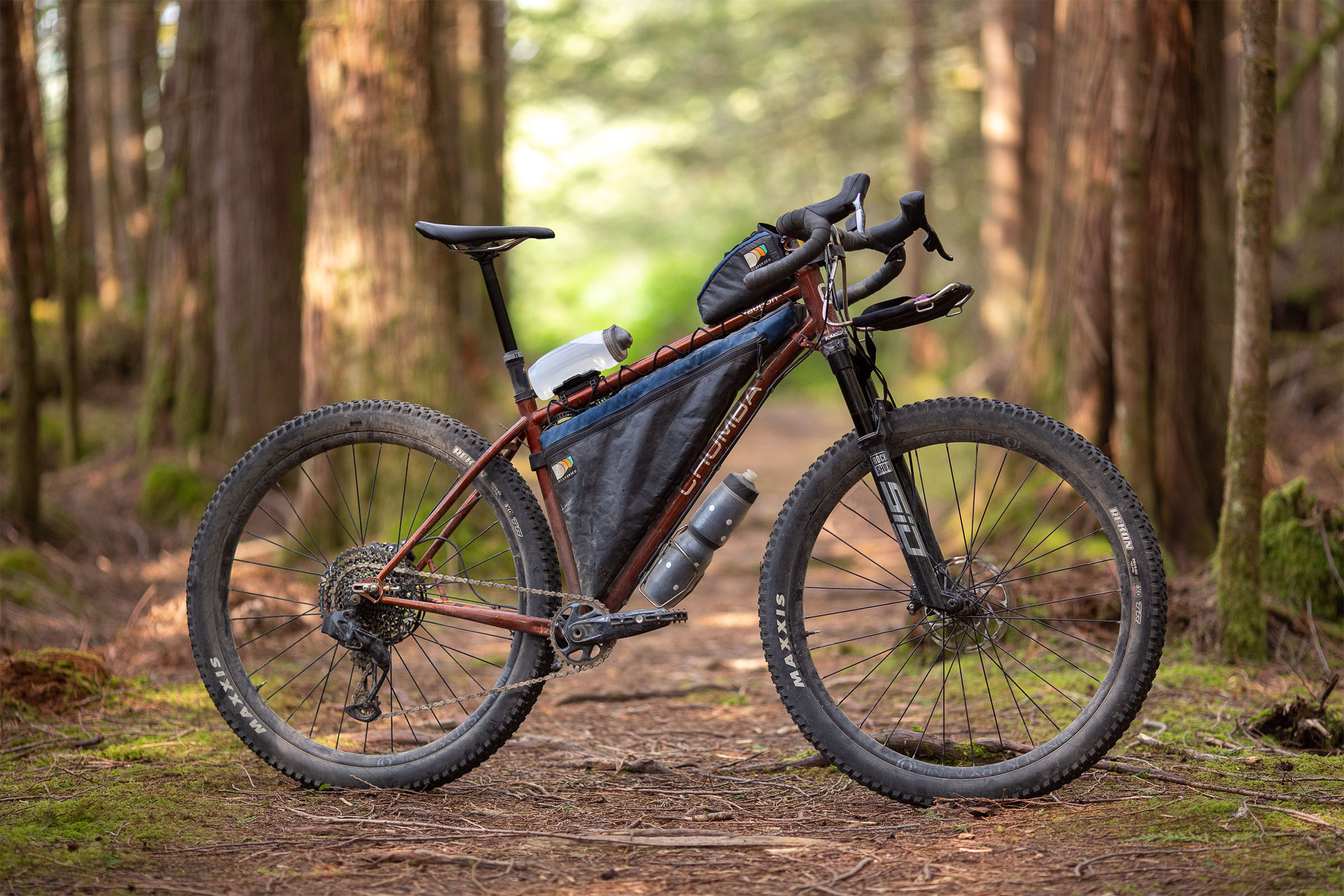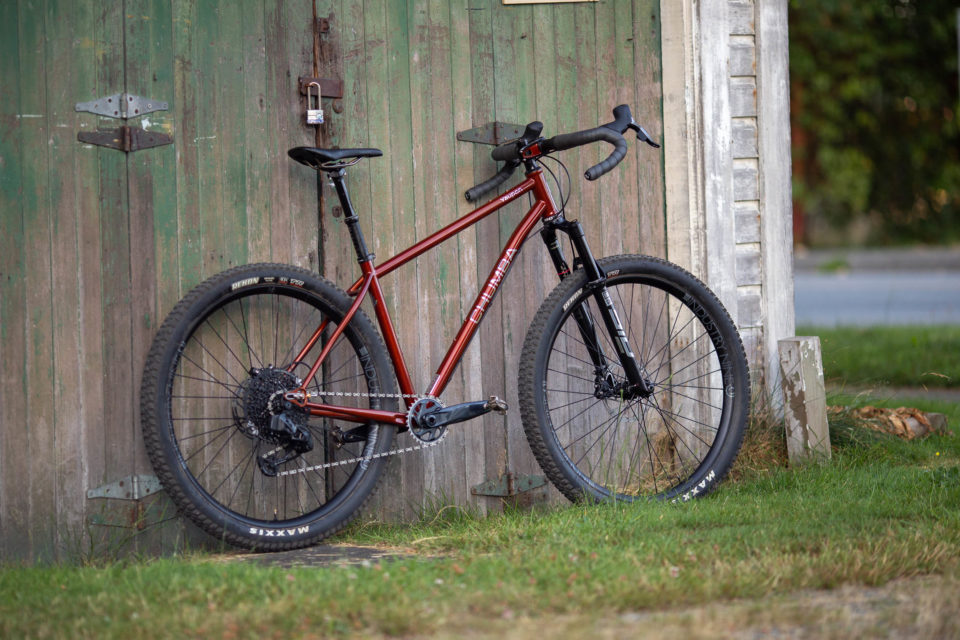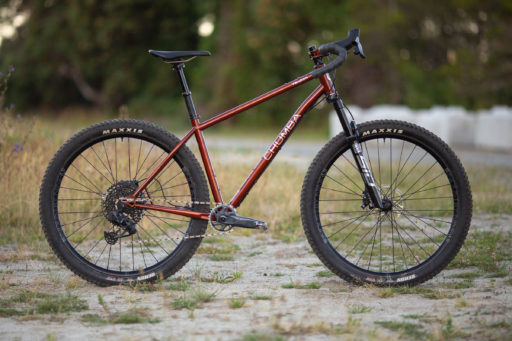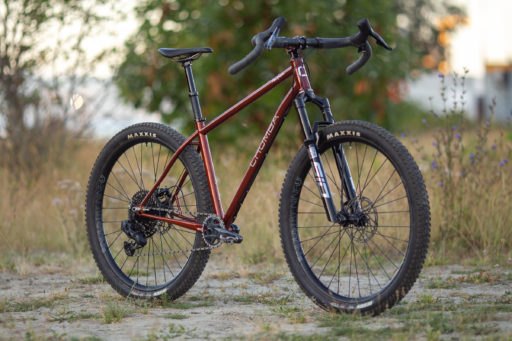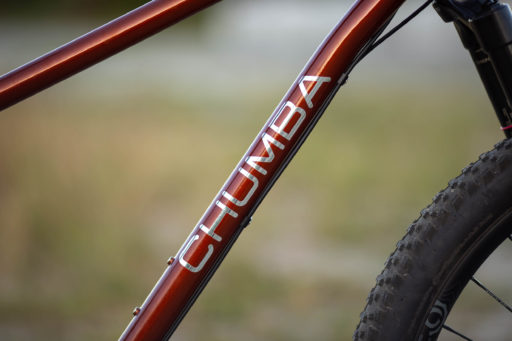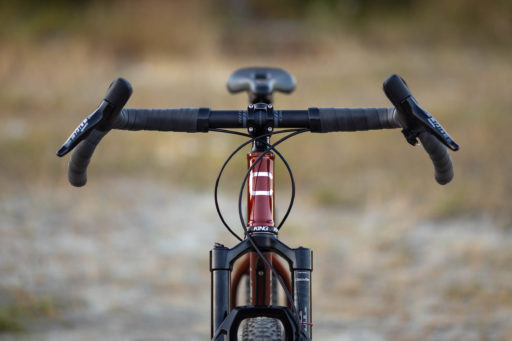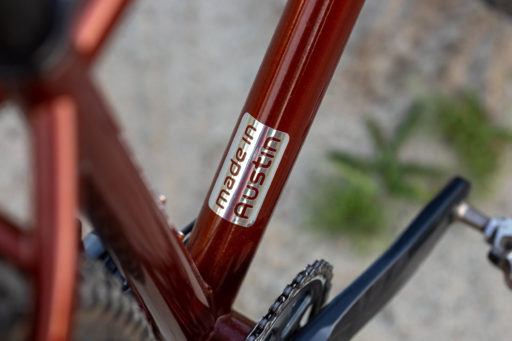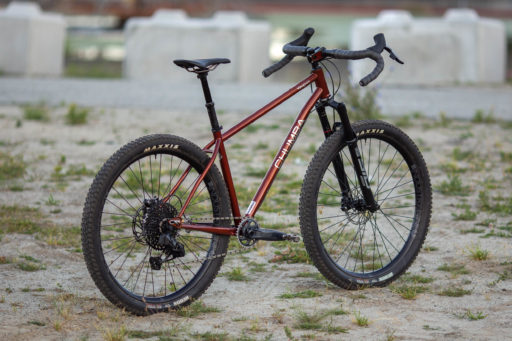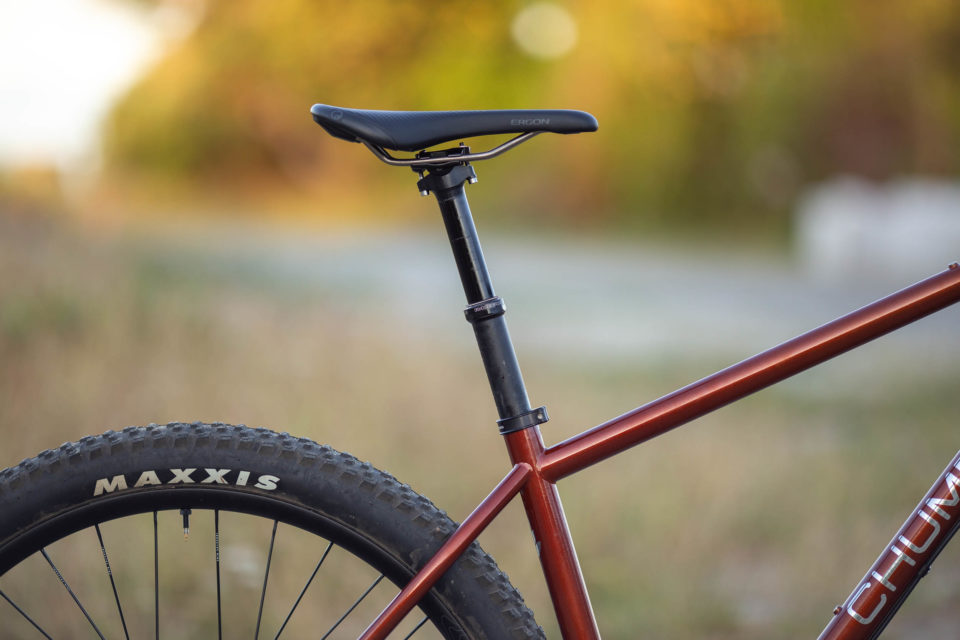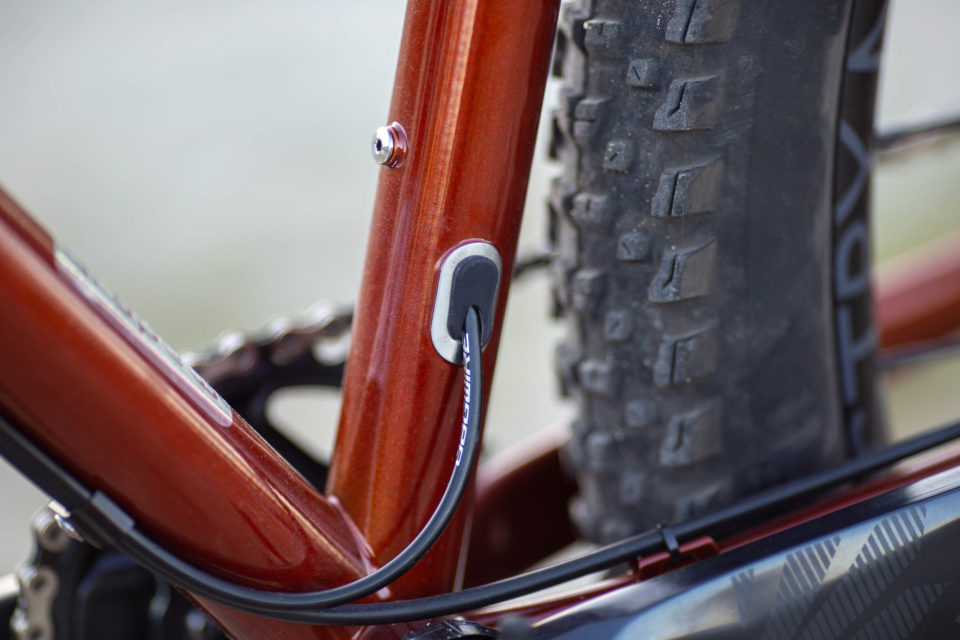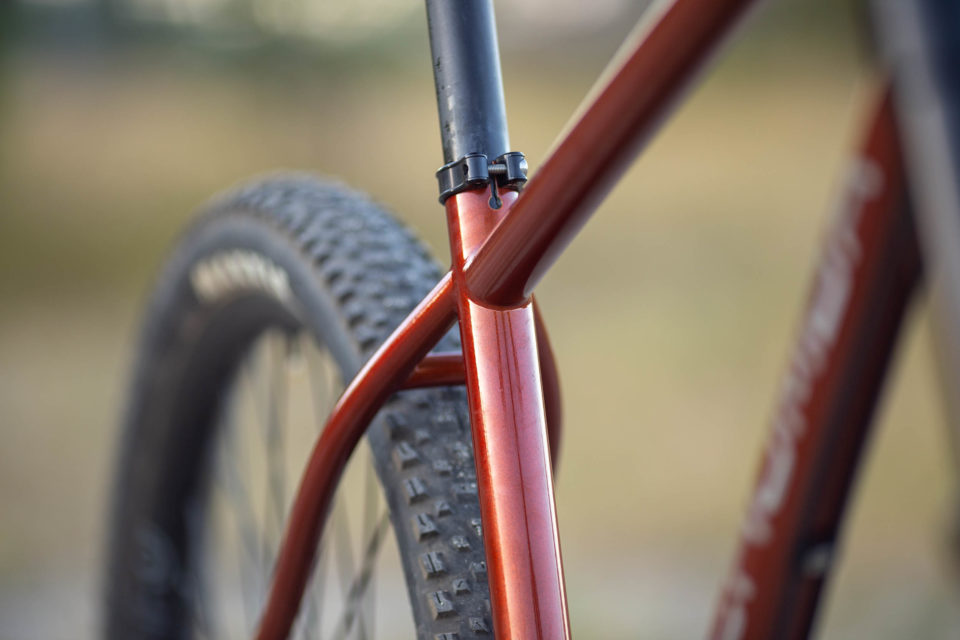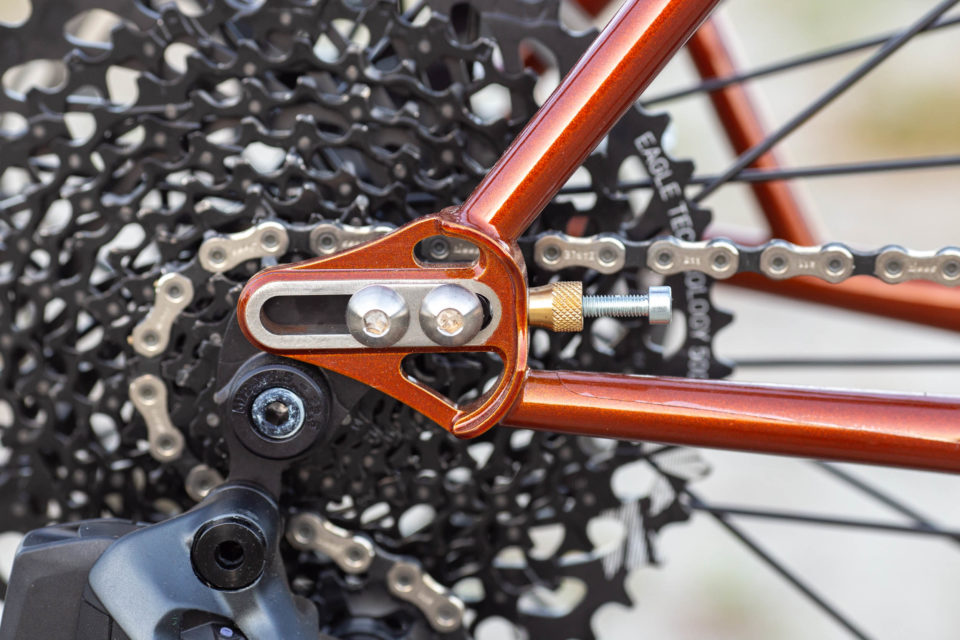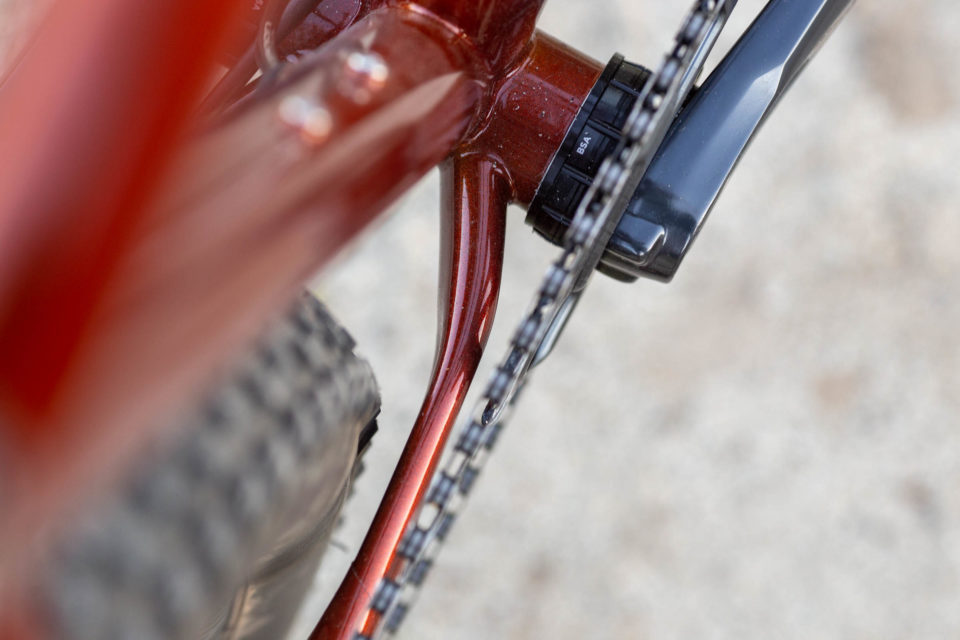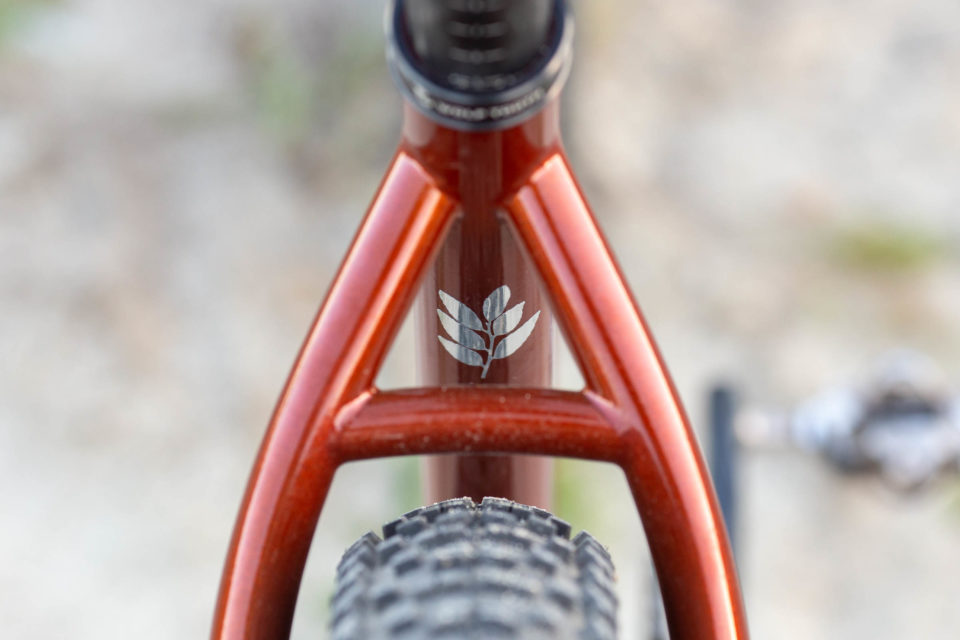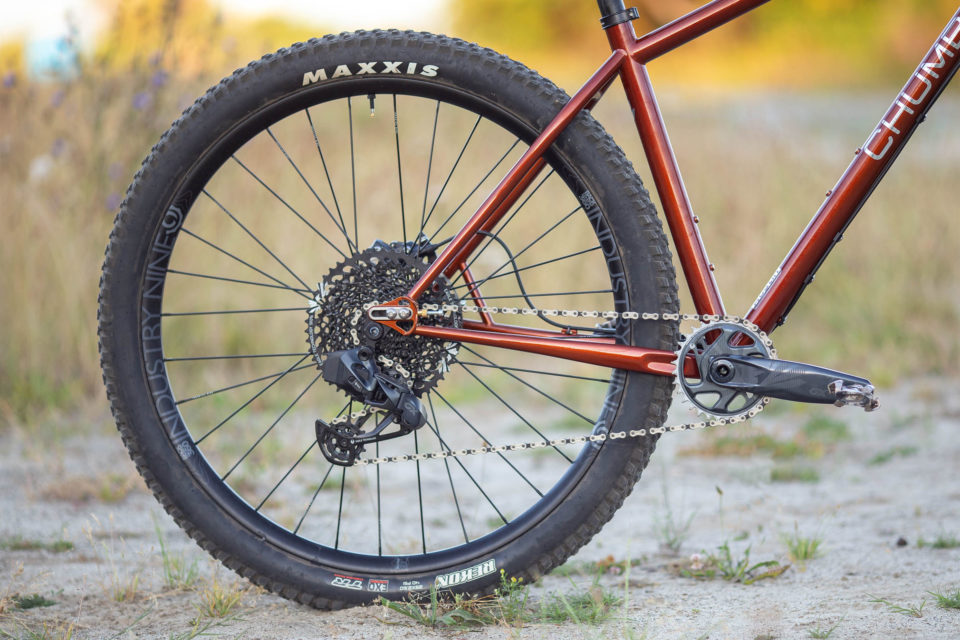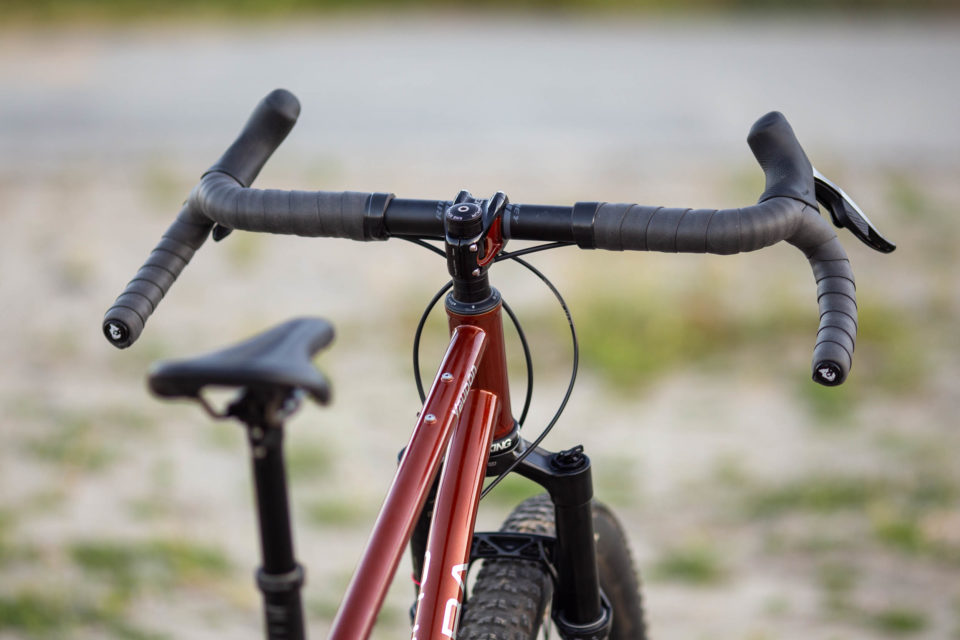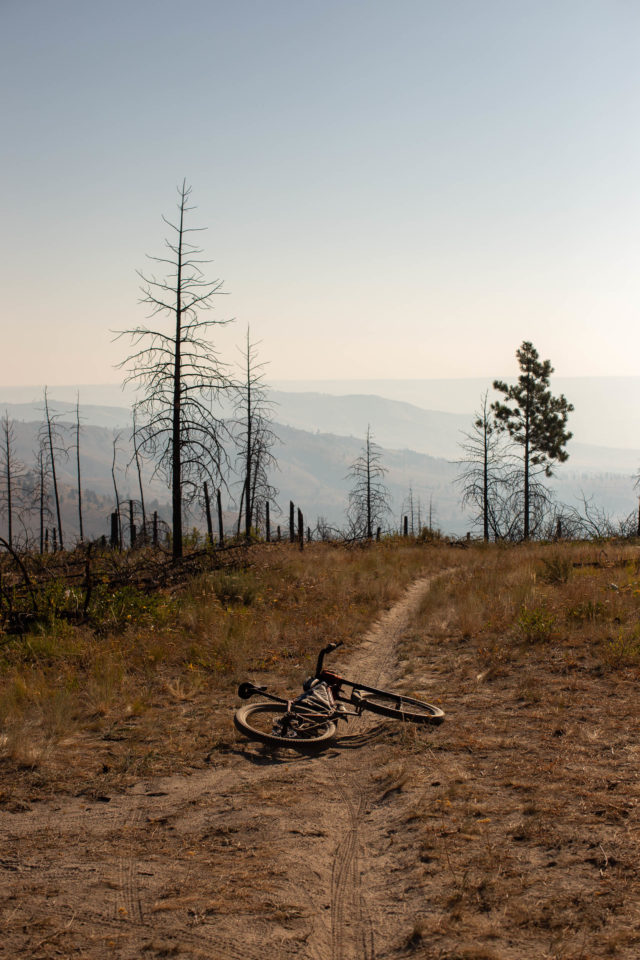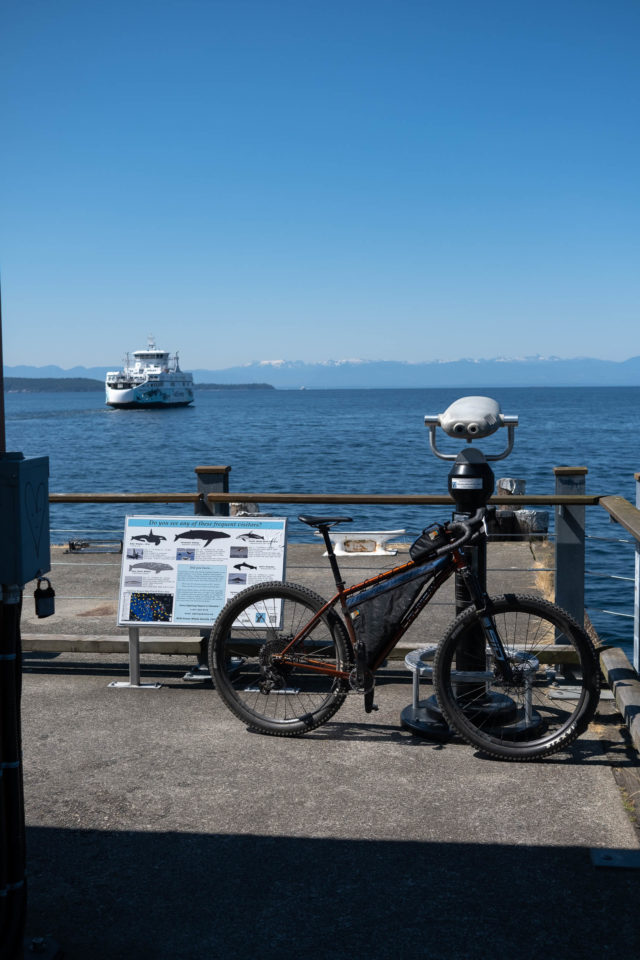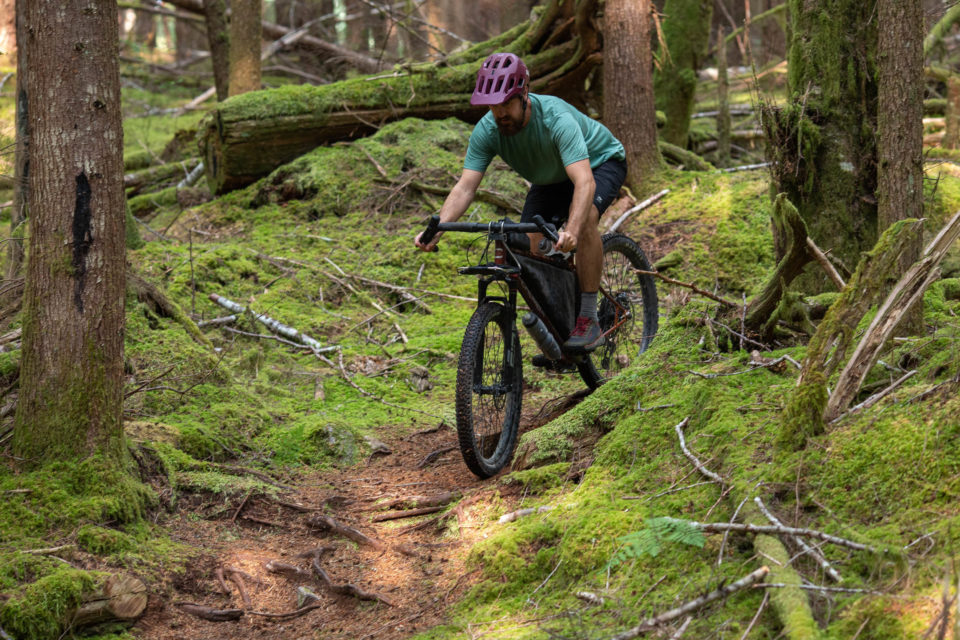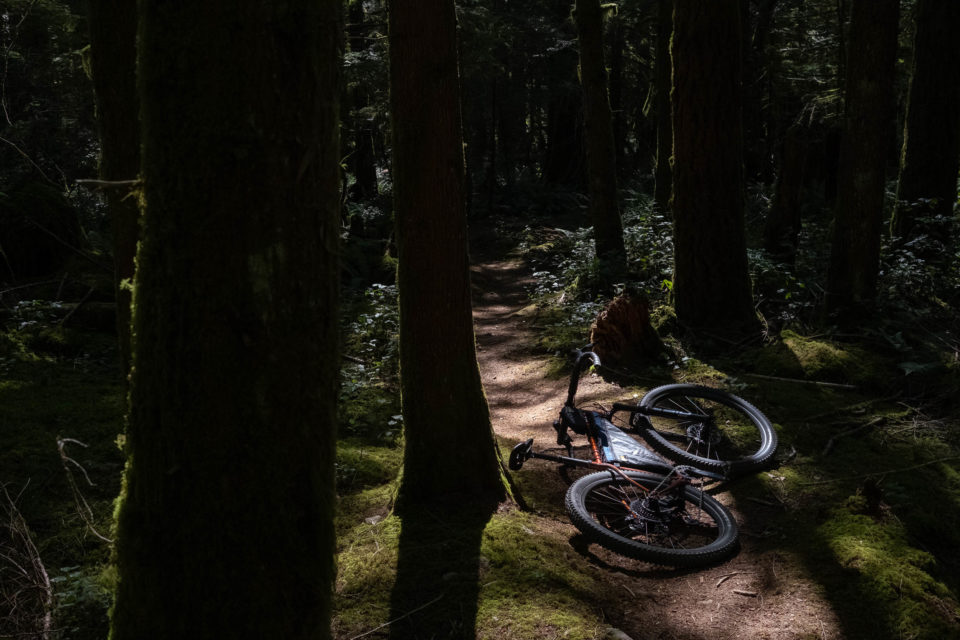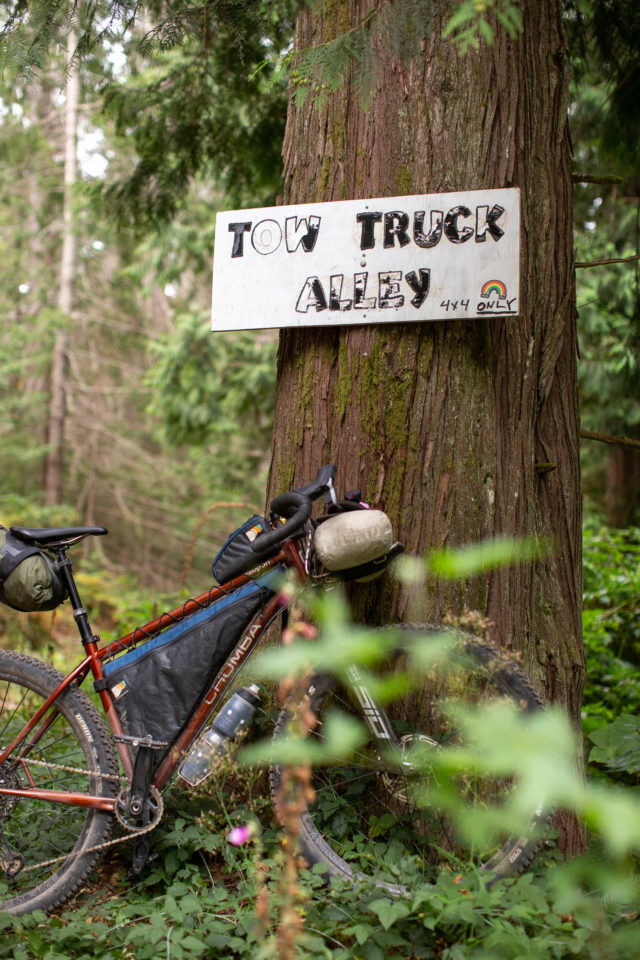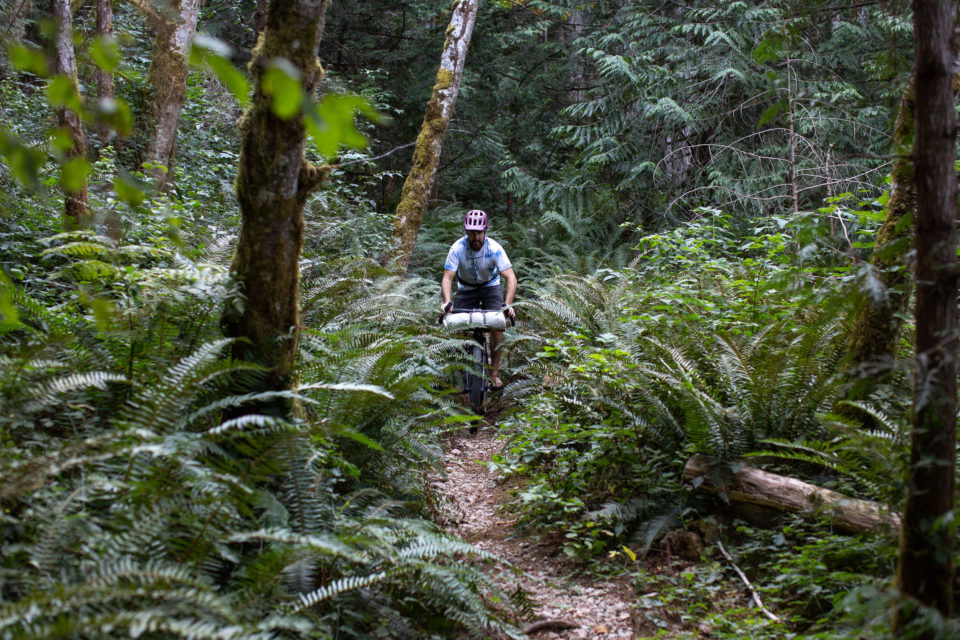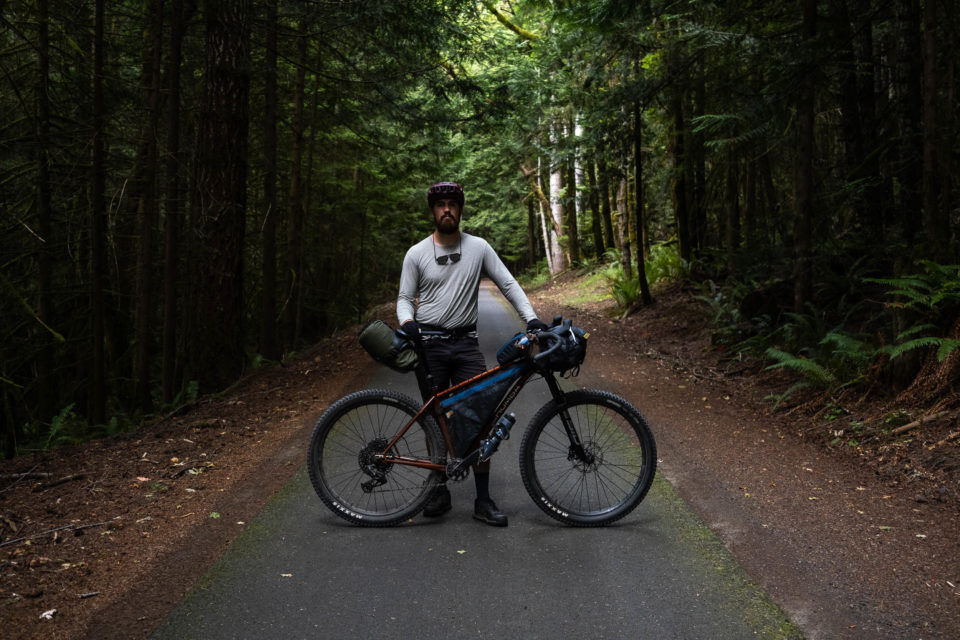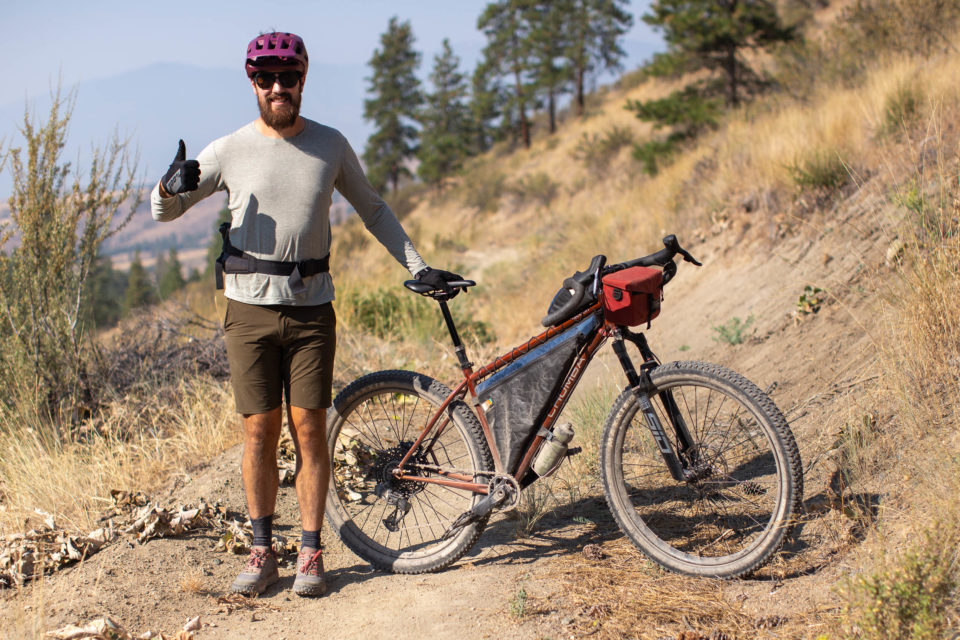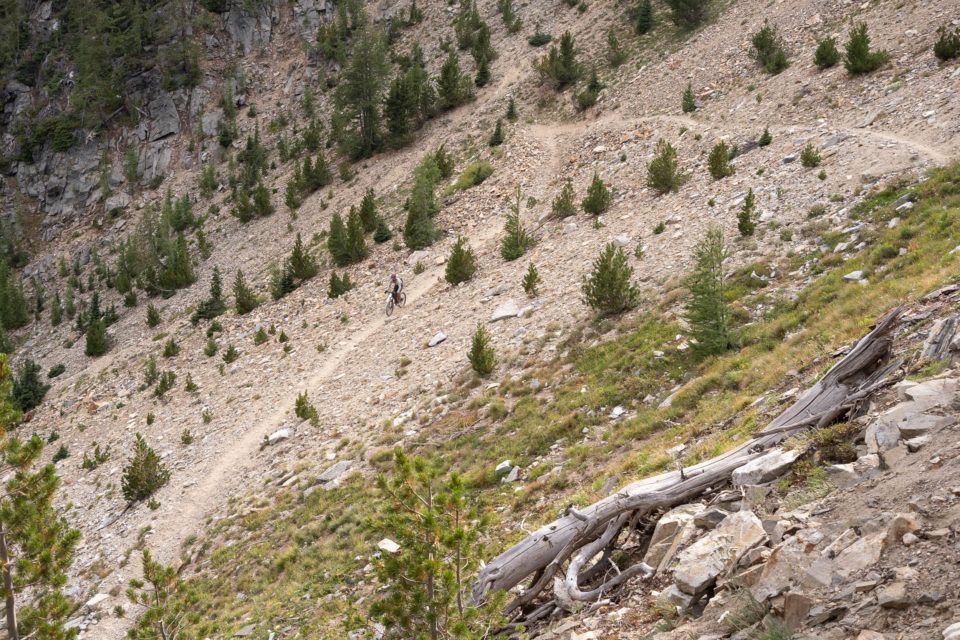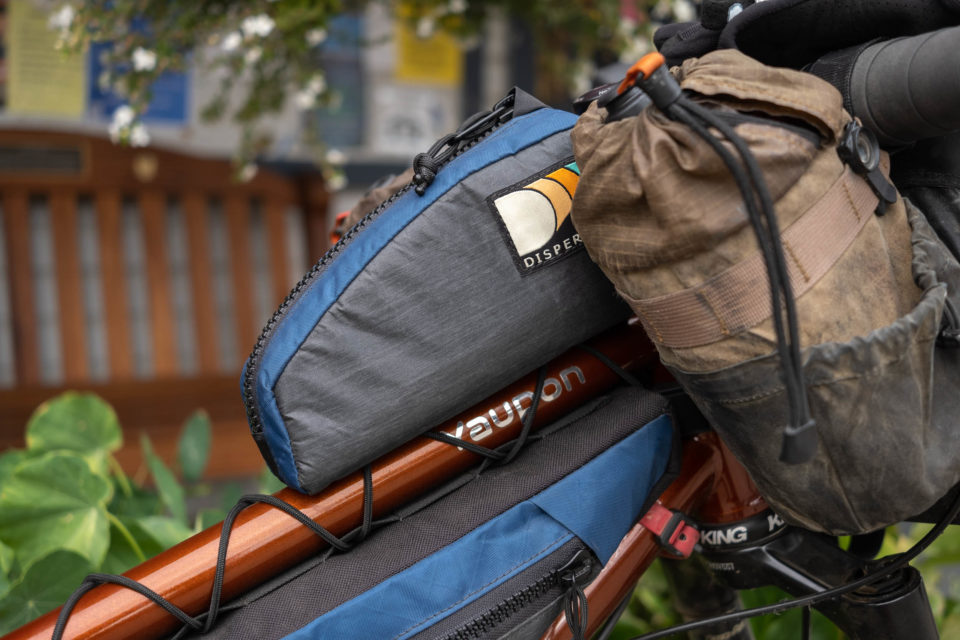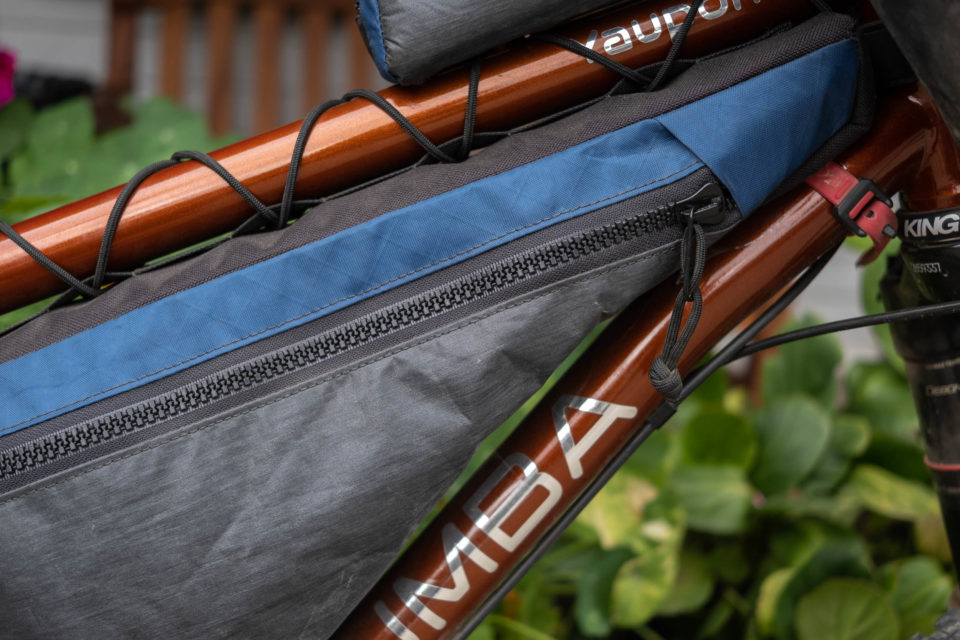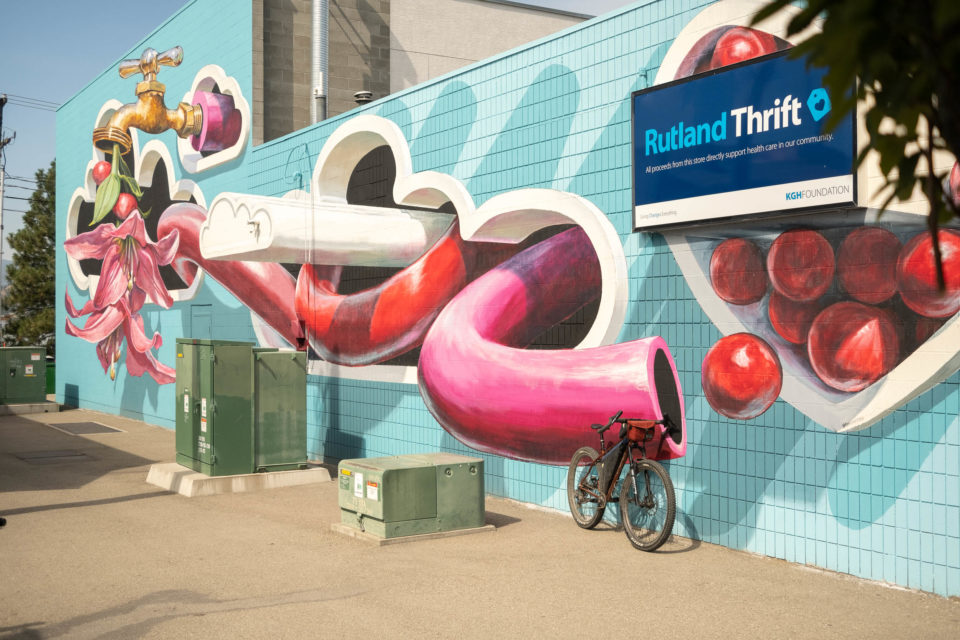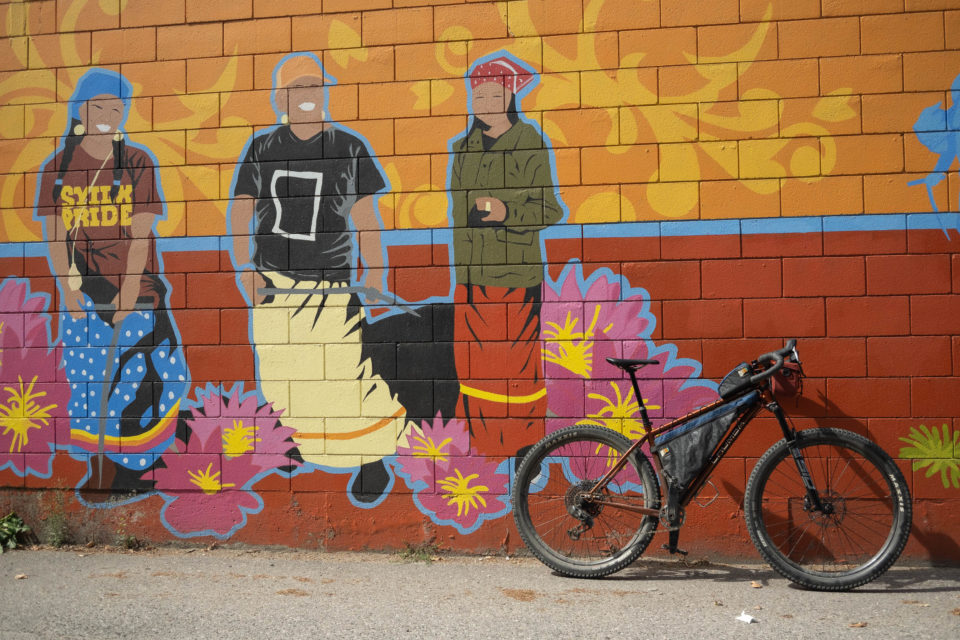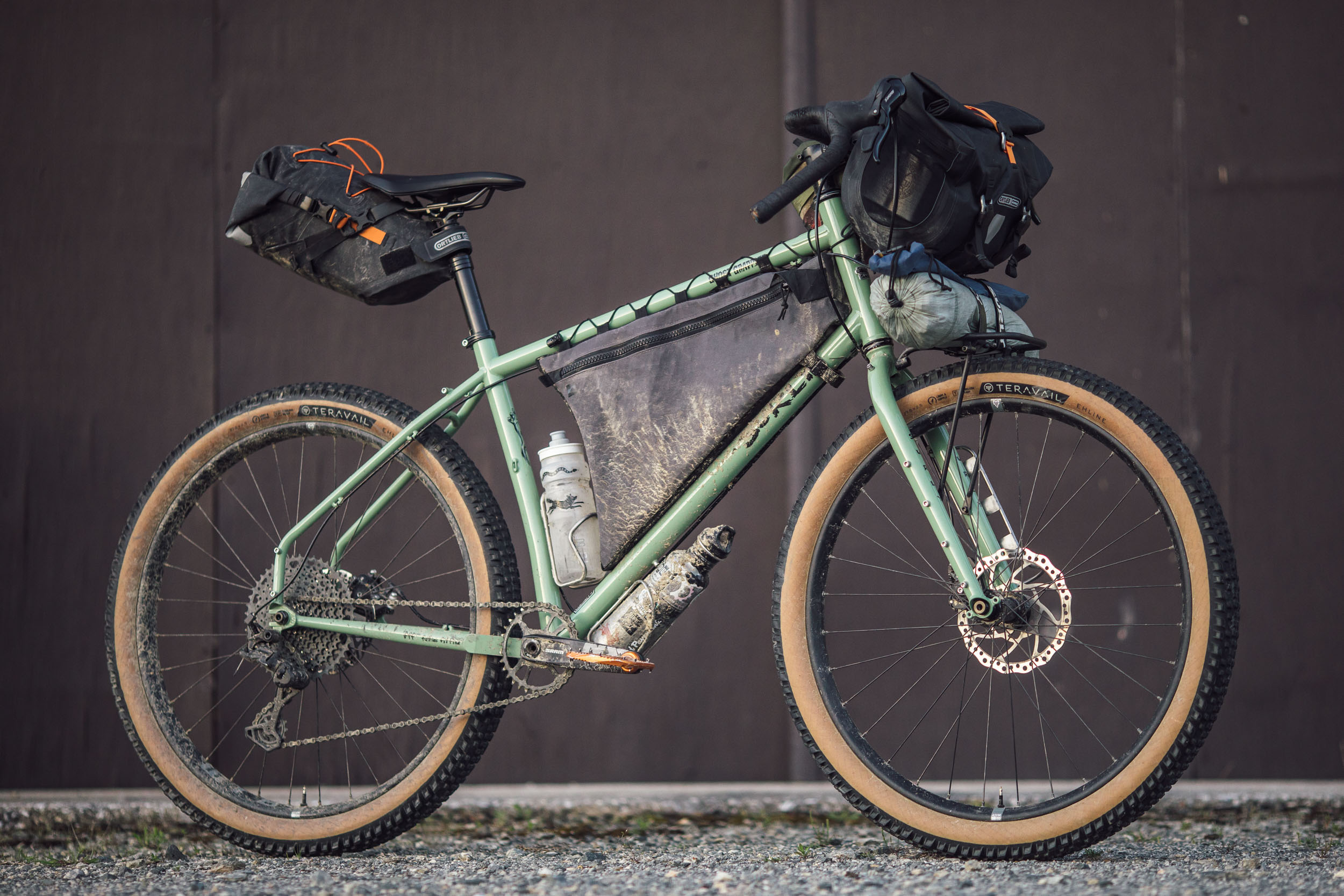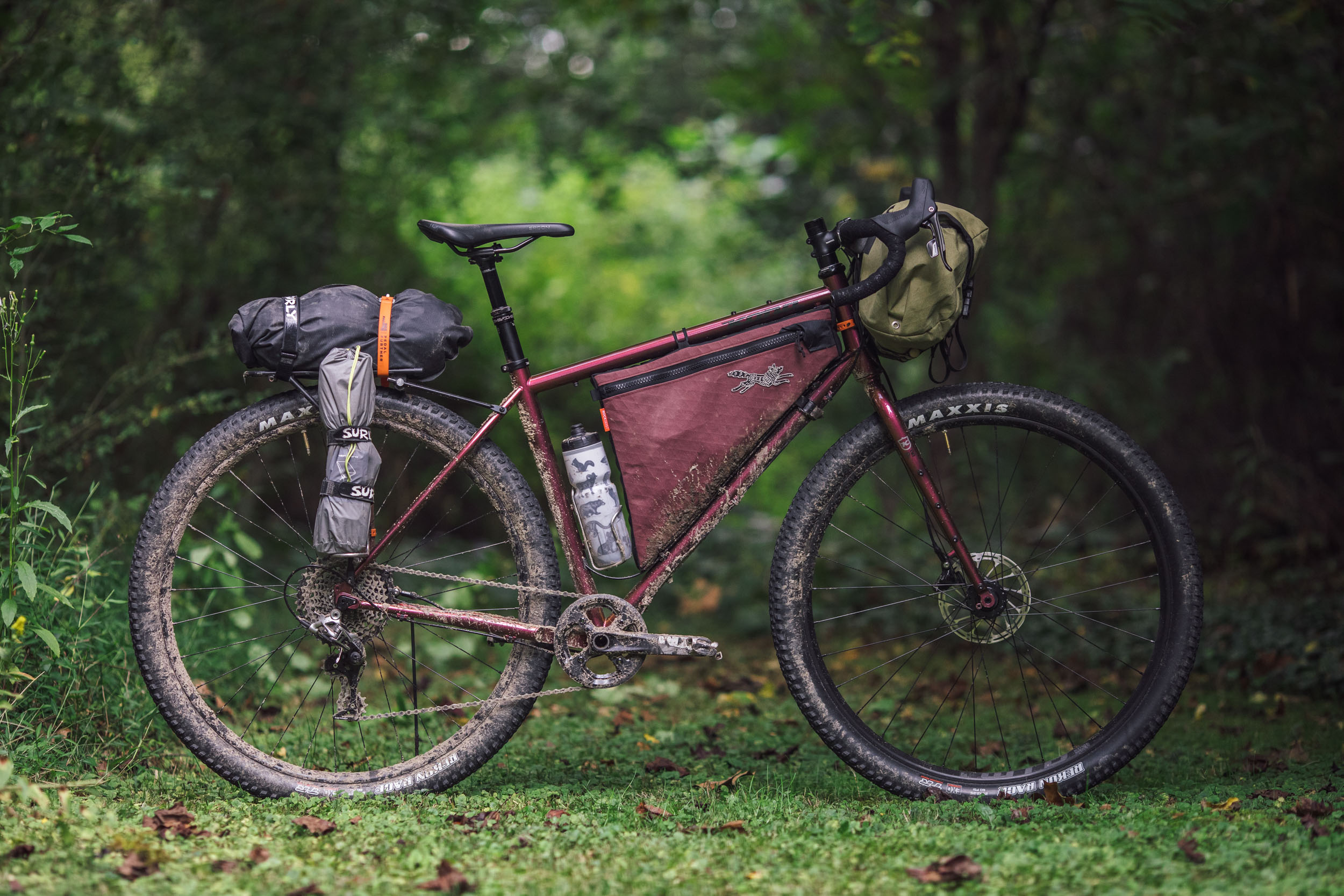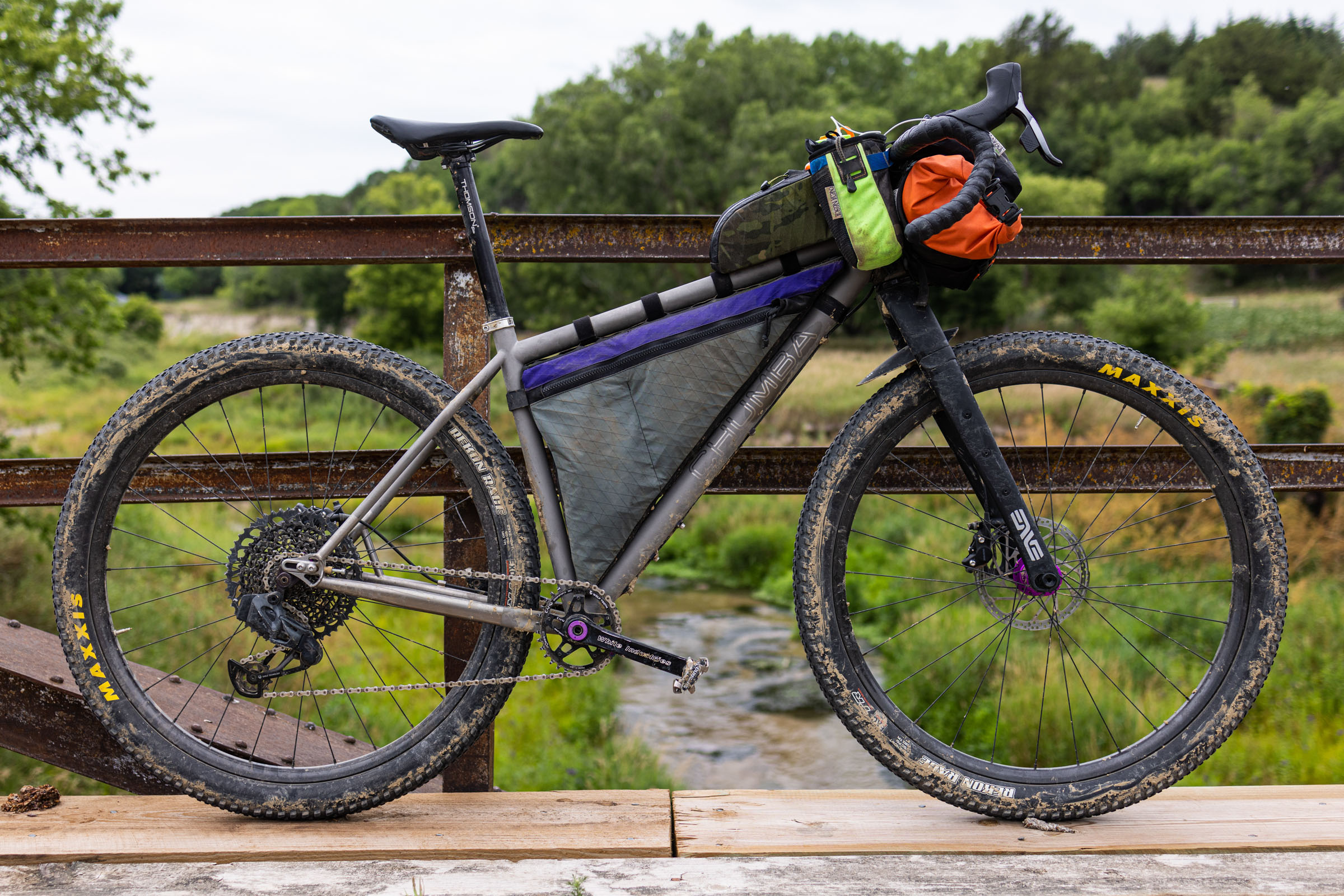Chumba Yaupon Review: Fair Game
Share This
Amid the growing world of modern all terrain bicycles (ATBs), the Chumba Yaupon manages to keep things interesting with its US-made steel frame, 29 x 2.6″ tires clearance, dropper post routing, and versatile trail-ready geometry. We’ve been riding one for the last few months on dirt roads, rough backcountry singletrack, and local trails for this review…
Before publishing our ATB Manifesto earlier this year, the term all terrain bicycle (ATB) wasn’t being tossed around that often, especially here in North America. I’m not saying we single-handedly brought the term back into the spotlight, because we didn’t, but I’m stoked to see it making a comeback. When you break it down, there’s a difference between gravel bikes and “all terrain bicycles,” which describes what the average person actually needs. Logan sums up ATBs very well in the conclusion of the manifesto: “The bikes that fit the bill would be designed, built, and outfitted to go almost anywhere efficiently and comfortably. They would be durably made to last a lifetime. The idea of a “quiver-killer” is arguably the only truth that can be transplanted to ATBs from the current gravel marketing spiel. Theoretically, ATBing is simply adventurous riding and having one bike for it.”
When Texas-based Chumba Bikes announced the Yaupon earlier this year, describing it as an “All Terrain Bike” for “everything from singletrack to multi-day bikepacking or a long gravel grind,” they had my attention. On Chumba’s website, the Yaupon exists in both their mountain bike and gravel bike lineups. On the mountain bike side of the brand’s lineup, the Sendero is a semi-rowdy hardtail based around 120-130mm travel forks and is offered as a titanium or steel build. The Stella is a titanium hardtail for cross-country racing and endurance rides, designed around short-travel suspension or rigid forks. On the gravel side, the Terlingua is a performance gravel bike with clearance for 50mm tires. The Yaupon straddles both worlds.
Yaupon, pronounced (yo-pawn) or (yaa-pn) is a type of evergreen holly tree found throughout the Southeastern US, a graphic of which is positioned on the back side of the frame’s seat tube. It’s also a hill in Austin, Texas, from which you can drop into one of the most challenging trail systems around, known as Thumper.
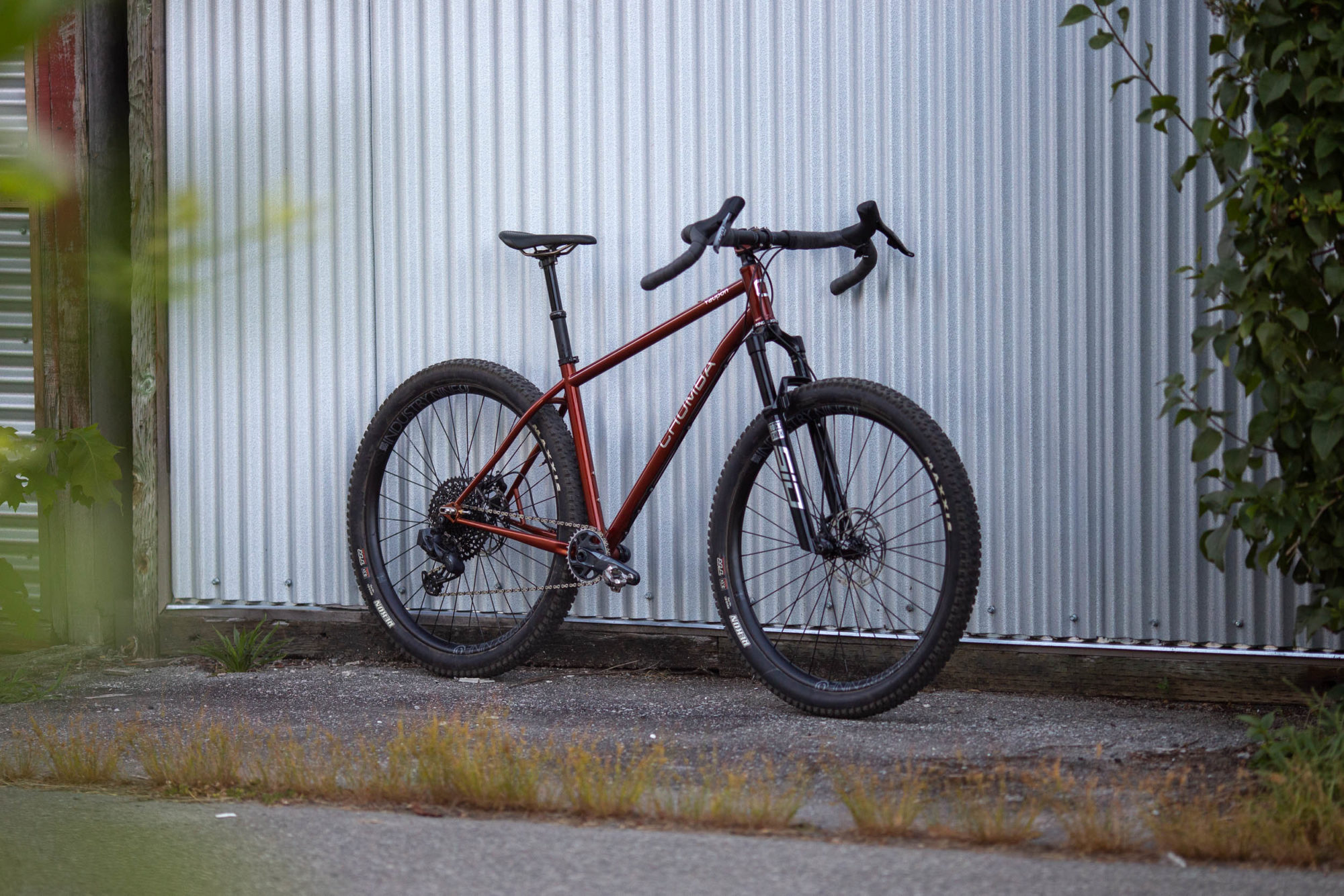
The Yaupon truly deserves a category of its own. Available in both Chromoly steel and titanium, the Yaupon is a drop-bar mountain bike that’s designed to be stable and planted on a variety of terrain. It features clearance for 29 x 2.6″ (27.5 x 2.8″) tires, sliding rear dropouts, and geometry optimized for 120mm of front travel or rigid forks with a 483mm-490mm axle to crown. It’s great to see a threaded 73mm bottom bracket, internal dropper post routing, boost hub spacing, two bottle mounts, plus an additional triple pack mount under the downtube on all sizes. Top tube mounts and external routing come standard, and while you won’t find rear rack mounts, Chumba offers a huge assortment of frame customizations, including more mounts, geometry adjustments, and internal routing. Additionally, there are options for custom paint and decal colors, plus frame-only, partial, and complete builds.
- Highlights
- Frame: Oversized Select Double Butted Tubing
- Angles (L): 68° Headtube, 73.5° Seattube
- Stack/Reach: 656mm/396mm
- BB Drop/Chainstay: 60mm/440-460mm
- Bottom Bracket: Threaded 68mm
- Hub specs: 15x110mm / 12x148mm, TA
- Seatpost: 31.6mm
- Max tire size: 29 x 2.6″ / 27.5 x 2.8″
- Price: $1,895 USD (frame only)
The build Chumba sent us to check out was pulled off the floor from this year’s ENVE Builders Roundup. While the majority of ENVE bits are long gone, it was still sporting a custom-painted ENVE stem to match the frame’s Root Bear Float paint job. The entire build leans as far toward the mountain bike side of the spectrum as a drop-bar ATB can. It came kitted out with big 2.6″ tires mounted to a burly Nine Backcountry 360 wheelset, flared Ritchey Beacon bars, a dropper post, and a Rockshox SID 120mm fork. A 1×12 SRAM AXS drivetrain was the cherry on top, rounding out a high-performing drop-bar ATB with some serious identity issues.
Frame Details and Features
There’s a lot of attention to detail in the Yaupon. It has clean welds and a high-quality finish, which is expected from a brand that prides itself on being made in the USA. Everything from the clear coat protected decals to the simple external cable routing is executed with purpose and precision. Chumba uses PMW sliding dropouts for wheelbase adjustments, easy trailside repairs, and drivetrain options. It also sports frame size-specific seat stay tubing diameter and a machined head tube that can accommodate both straight and tapered steerer tubes.
There is a stainless steel dropper port on the seat tube, just above the bottom bracket, for those who want to push the Yaupon even further. It also has a relatively low standover height, leaving plenty of room for longer dropper posts. On the size large I tested (with my 33″ inseam), I was able to fit a 170mm travel post with room to spare. Boost hub spacing and generous tire clearance open up a range of different wheel and tire configurations, from the 29 x 2.6″ trail machine Chumba sent me to faster-rolling Tour Divide-ready 2.3″ tires or even 27.5+.
Speaking of tire clearance, the 29 x 2.6″ Maxxis Rekon tires mounted to 36mm internal width Industry Nine rims measured closer to 2.75″. There was still about 1/4″ of clearance beside the tires and the chainstays (and seat tube) with the rear dropout in the shortest position, which seems adequate. Running a 2.4″ or 2.5″ tire on slightly narrower rims would allow much more clearance for mud and other debris. With the dropouts slid all the way back, I’m sure some 29 x 2.8″ tires would fit as well.
Chumba’s focus on quality materials and construction techniques is evident in the finished product. The Yaupon frame is made with their oversized double butted steel tubing, with specific dimensions and thicknesses specced for each model and size in order to achieve a particular and consistent ride quality. Chumba also manages to keep the Yaupon surprisingly lightweight, even with reinforcements in high-stress areas and certain junctions, such as the rear triangle brace between the chain stay and seat stay. The complete they sent me weighed in at just 26.8 pounds (12.1kg) without pedals. Granted, it has some nice components, but I wouldn’t consider it a particularly weight-conscious parts selection.
Dirt-Drop ATB Build
Since all of Chumba’s complete bikes are built with a custom selection of components, the Yaupon can be kitted out in a variety of ways. The build they sent me was clearly intended to stretch its capabilities far into the realm of mountain bikes. The wireless SRAM AXS drivetrain made for easy shifting, and the short shifter throw meant more room for handlebar bags, taking full advantage of the wide, flared bars. It’s a winning combination for long days in the saddle.
It came with a two-position Race Face Turbine SL dropper post installed, which weighs less than most droppers and actuates incredibly fast, paired with a TransX Drop Bar lever. I quickly realized the dropper post didn’t pair well with saddle bags that limit the post’s travel, since the Turbine SL is either UP or DOWN, with no in between, so I swapped that out for a standard PNW Coast dropper I had kicking around. The TransX Hot Lap drop bar remote was the first drop-bar lever I’ve used that actually makes sense for riding technical terrain. It fits on the inside of the bar just under the brake hood with a double sided “see-saw” like thumb lever that’s operable from both the hoods and the drops. Compared to levers that mount on the tops, requiring the user to either move their hand inward or remove it from the bar altogether to reach, the Hot Lap lever was a game changer. For the record, ENVE, Easton, Crankbrothers, FSA, PRO, and Wolf Tooth all offer similar levers.
Build Kit
- Fork Rockshox SID Ultimate, 120mm
- Wheels Industry Nine Backcountry 360
- Wheels Industry Nine Backcountry 360
- Hubs Industry Nine Hydra
- Tires Maxxis Rekon 29×2.6″
- Brakes SRAM AXS Force, Hydraulic
- Brake Rotors SRAM Centerline
- Cranks SRAM GX Eagle AXS, 32T
- Bottom Bracket SRAM DUB
- Rear Derailleur SRAM GX Eagle AXS, 12-Speed
- Cassette SRAM GX Eagle AXS, 10-52T
- Chain SRAM GX Eagle
- Headset Chris King NoThreadSet
- Bar Tape Wolf Tooth Supple Bar Tape
- Handlebar Ritchey Comp Beacon XL
- Stem ENVE Mountain Stem, 50mm
- Seatpost Race Face Turbine SL
- Seatpost ClampWolf Tooth Seatpost Clamp
- Saddle Ergon SM Pro Men, Small/Medium
I had no issues or noteworthy complaints during my testing period. The 36mm wide Industry Nine wheels provided plenty of support for the 2.6″ wide tires, allowing for low pressures and lots of traction. The high-engagement Hydra rear hub was a life saver when riding technical terrain, especially when pushing into true mountain bike territory. And the smooth shifting of the SRAM AXS drivetrain has me thinking about taking a break from ye’ old mechanical. The Ritchey Beacon XL bars were a major highlight for me as well. More on that below.
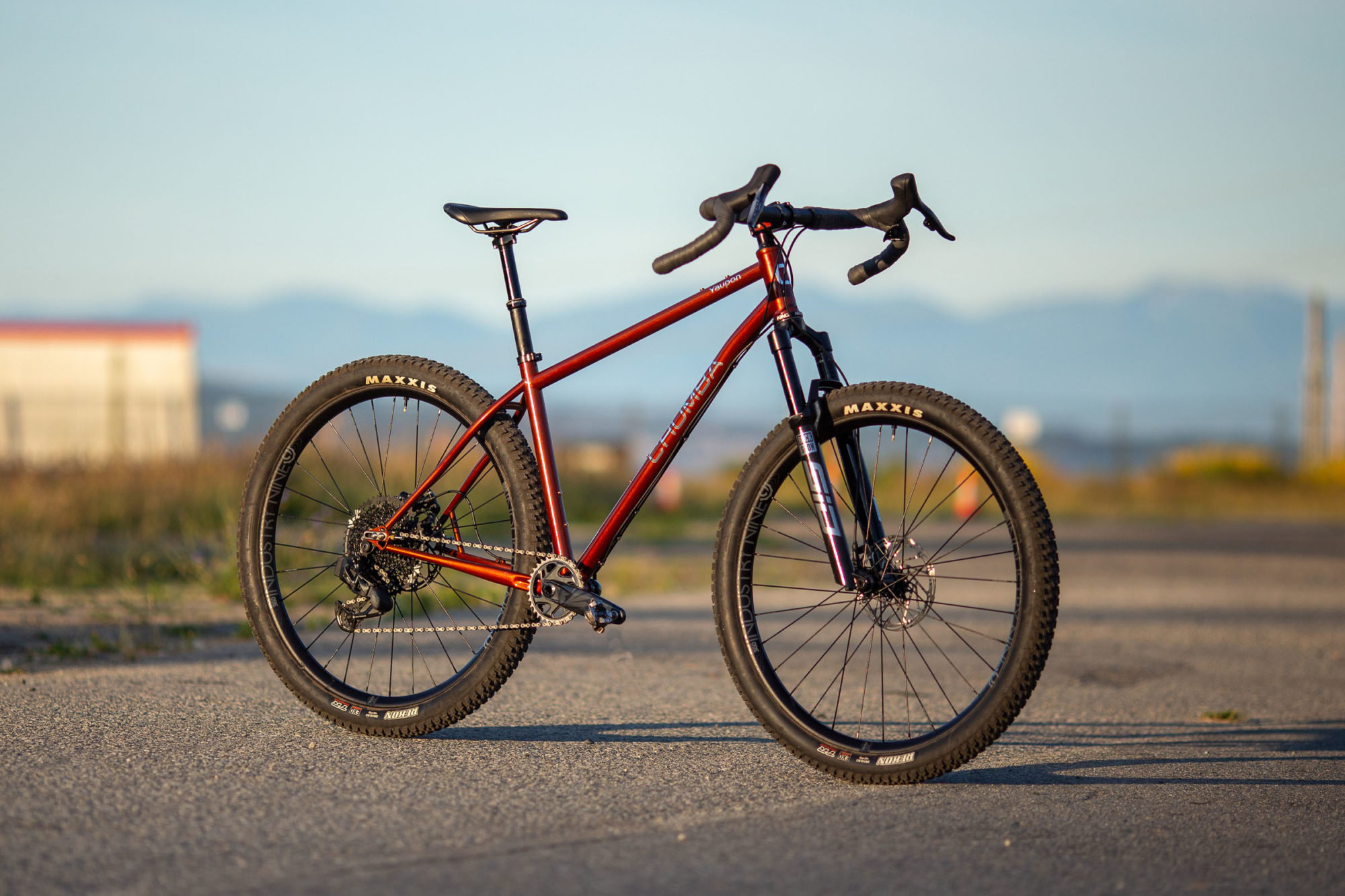
Omniterrain
The Yaupon is a great example of a modern drop-bar mountain bike. At first glance, it might remind folks of the Salsa Fargo, Tumbleweed Stargazer, Cotic Cascade, Surly Ghost Grappler, or even the Kona Sutra ULTD, but it manages to push further into mountain bike territory than any of them. It has a slack (for a drop-bar bike) 68° head tube angle, a moderate 73.5° seat tube angle to help position the rider’s weight back up over the bars, and a long wheelbase for a stable and predictable ride. It has a long reach and high stack that are designed to play nicely with short stems and wide bars, which adds up to a comfortable riding position that just felt right.
It’s hard to put my finger on exactly what feels so right about the Yaupon; I’m sure having spent too much time on more racy gravel bikes this last year, accompanied by a sore back, has had some influence on it, but damn, it’s an easy bike to just hop and go. On more mellow terrain, the wide Ritchey bars left plenty of room to sit back and look around, making it feel natural to roll slowly through towns and on roads. While riding in the hoods, it’s easy to put extra power into the pedals, whether you’re on roads or navigating singletrack, hopping off curbs, flying through rock gardens, or charging through technical terrain, all without looking too out of place. The high stack and shallow drop of the Ritchey Beacon bars allowed me to actually ride in the drops—providing loads of stability and control on steep descents and through rough trails. The Yaupon does a good job at plowing through pretty much anything.
I wouldn’t say the Yaupon is perfect for any single type of ride. It’s a mishmash of genres that’s overkill for easy terrain and keeps you on the edge of your seat on technical terrain. But, it feels incredibly fun and predictable the whole way through. Its unmatched versatility is what sets the Yaupon apart from other drop-bar ATBs and why you can head into uncertainty and be totally okay with it. I’ve ridden demanding descents in the North Cascades, from rocky high-elevation chunk into alpine basins to fast and loose singletrack in the interior, and I’ve also linked gravel roads with rooty local singletrack here on the coast. It might not always be the right bike, but it certainly never felt like the wrong bike. It’s all fair game on the Yaupon.

While Out Bikepacking
I spent most of my time with the Yaupon loaded up with bags and gear. The Wayward Riders Louise Dropper Post Harness allowed for nearly-uninterrupted dropper action, even with the 7L dry bag packed full. That, plus the long reach and low standover, left plenty of room to manoeuvre the bike and my body while riding and standing over the top tube. Up front, I swapped between my trusted Bags By Bird Piccolo Short Flap and Jack The Bike Rack, but the wide bars and clean cable routing could have allowed for any type of handlebar bag or harness.
One complaint I have had while testing modern hardtails is that the lower standover often limits the amount of space within the main triangle for a frame bag. A long-travel dropper post is all well and good, but I think there’s a sweet spot that can still allow for a generous bag as well—something usually achieved through clever tube shapes. With help from the Yaupon’s long reach and high stack, you get the best of both worlds. You could fit a massive full-custom frame bag, a large wedge bag with a seat tube-mounted bottle, or even mount two bottles and run a smaller wedge-style bag into the main triangle. Chumba included a big full frame bag made by Dispersed Bikepacking, which filled up every last bit of space available.
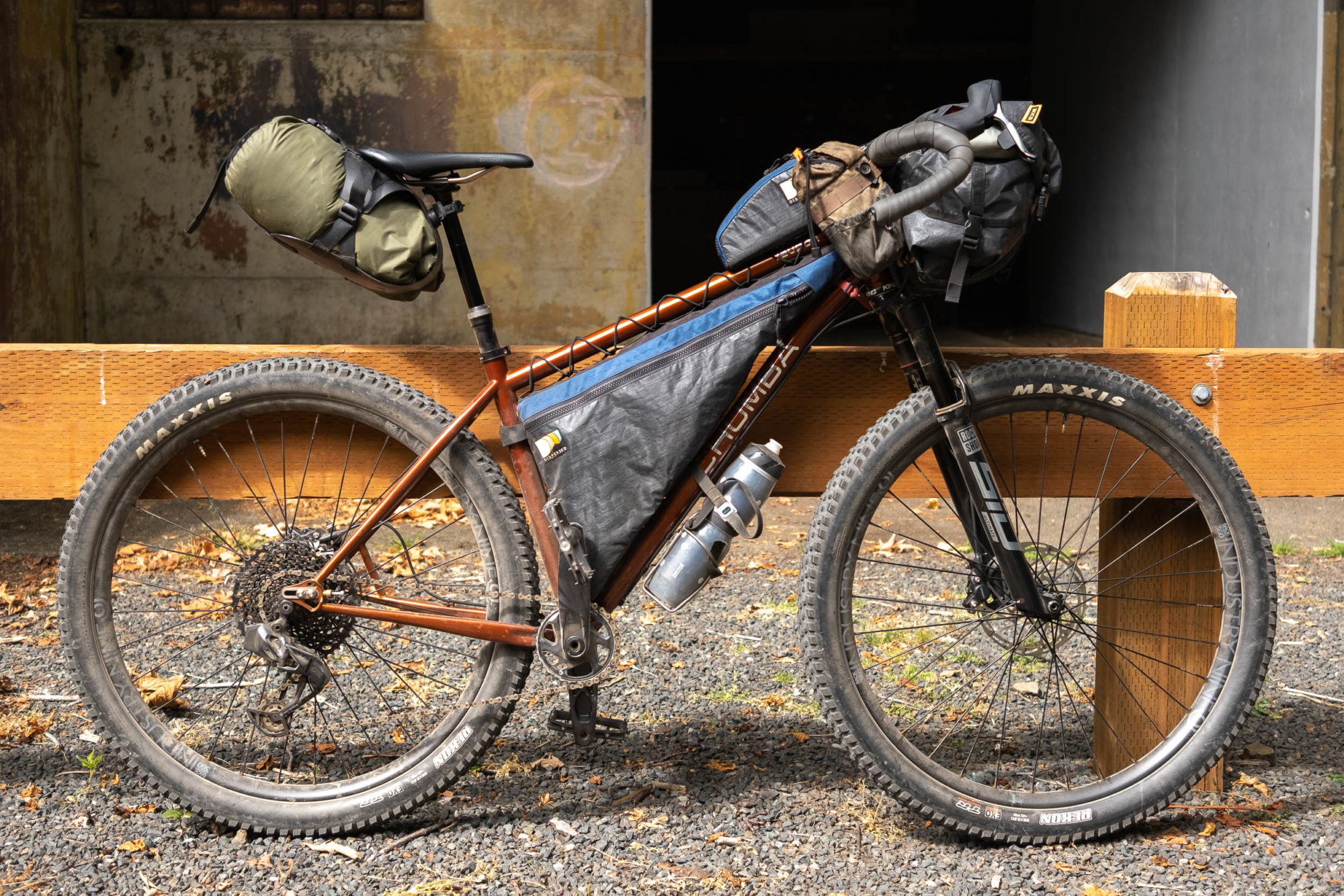
Considering that the Yaupon has downtube mounts, dual bottle mounts, and top tube bosses, I was surprised not to see rear rack mounts as a stock offering. You can get them, but it costs an extra $100 for four dedicated mounts. Chumba recommends using a thru-axle mounted rack, like the Old Man Mountain Elkhorn or the Tailfin Aeropack to get around this, due to their increased carrying capacity and reliability. While I don’t disagree, there are several great traditional racks out there, such as my well-loved Tumbleweed T-Rack, that I’d have liked to bolt on to the Yaupon to take full advantage of that longer dropper post.
Riding loaded felt balanced and natural on the Yaupon. The long wheelbase and front-end offered a planted and surefooted ride on even the chunkiest of trails, while the steep seat tube angle helped shift my weight forward toward the front of the bike without ever feeling too aggressive. The Yaupon’s adjustable 440-460mm chainstays (across all sizes) are fairly long for bikes in this growing category. I opted for the shortest position most of the time to allow some more manoeuvrability, and never had any issues with the front end lifting or wandering off on me. For longer dirt-road style trips, the 460mm position would offer loads of stability. For reference, the Surly Ghost Grappler has ultra-short 425mm chainstays, the Tumbleweed Stargazer has fixed 450mm chainstays, and the Salsa Fargo is one of a few options out there with dropouts that adjust from 445mm to 462mm, likely to help accommodate bigger 29 x 3.0″ tires.
Can I Ride this on a gravel bike Yaupon?
“Can I ride this on a gravel bike” must be one of the most asked questions on this site. Bikes are so wonderfully capable these days that you probably can ride the route in question on whatever modern bike you’ve got. I recently spent three days on a vintage mountain bike loaded up with packrafting and camping gear down rough service roads and dragging it through impossibly thick forest. Was it the ideal bike? Not even close. But whether you’re over- or under-equipped doesn’t really matter if you’re prepared to immerse yourself in the experience and let the terrain dictate your speed and daily mileage.
The Yaupon throws a wrench in all of that. It feels equally at home on paved roads, gravel, and singletrack. I could see folks building it up with lighter components as an ultra-endurance “divide” racing rig or swapping over to larger tires for month-long expedition style bikepacking trips. The ability to run a 120mm suspension fork or rigid forks with a 483-490mm axle-to-crown also opens up different types of builds and possibilities. Options like the ENVE Mountain Fork or Whisky No.9 MTN Fork easily swap in for 120mm travel forks, effectively steepening the head tube by nearly 2°, lowering the stack, and dropping the bottom bracket by around 15mm. Chumba suggests a fully rigid Yaupon would make a great platform for events like the Tour Divide or big gravel races, and I’d agree.
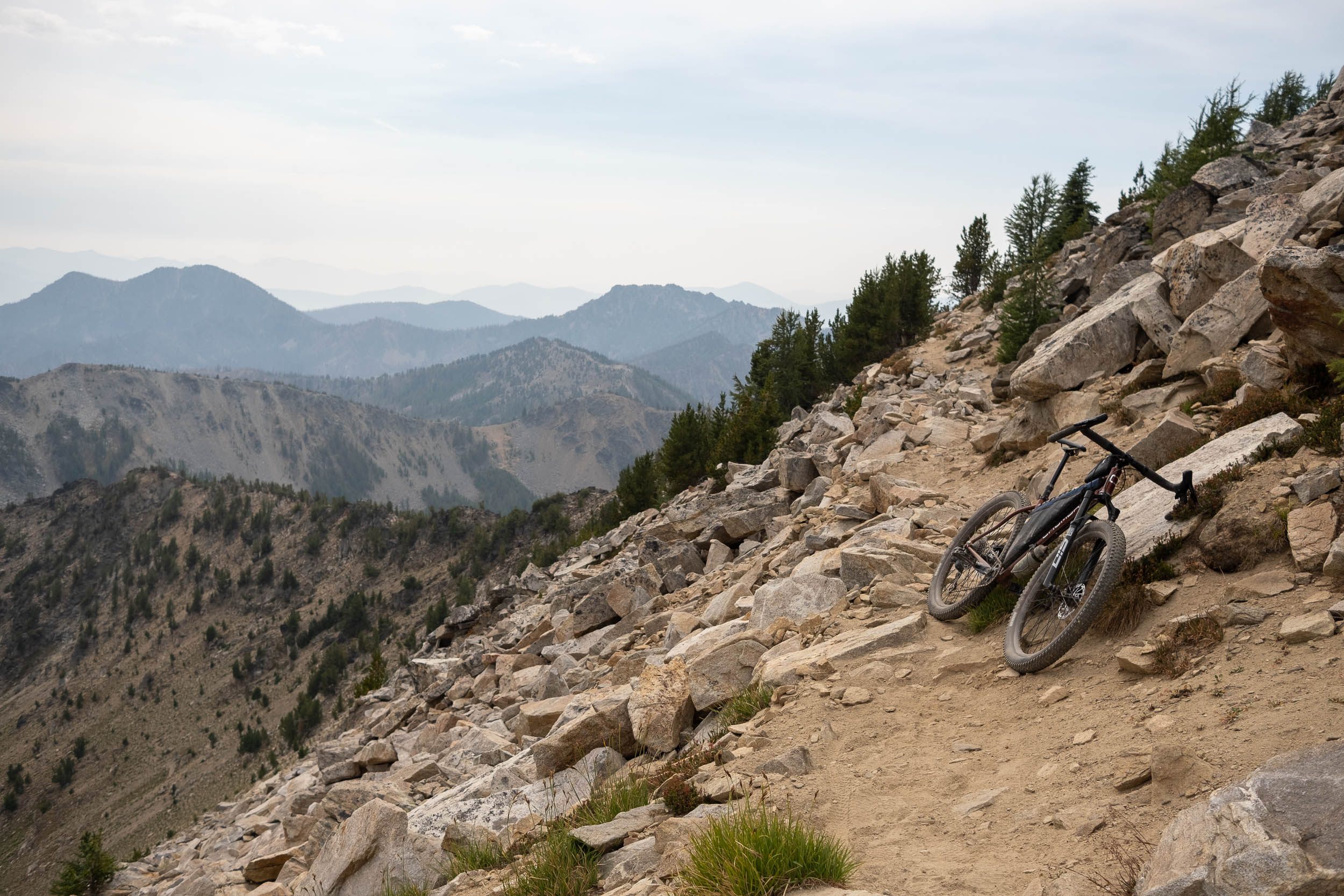
When I’m reviewing bikes, I usually plan one big trip that helps solidify my impressions of the bike in question. While some end up being more epic than others, there’s usually an “ah-ha” moment when I realize what the bike is capable of, what it does best, and when I should probably quit while I’m ahead. In the case of the Yaupon, it was a recent trip down through the North Cascades in Washington. We were taking the scenic route back from a trip to BC’s interior and stumbled upon some backcountry trails south of Twisp and the Methow Valley.
Popularized for mountain biking by Freehub Magazine, there’s a remote 30-kilometer singletrack loop called the “Angel’s Staircase Loop” or “Golden Lakes Loop,” named after the high-elevation lakes and stunning larch forests than turn a fiery yellow each fall. The route climbs more than 5,000 feet, passing through ponderosa forests and eventually leading up to subalpine meadows and lakes. There’s hike-a-bike, technical rock fields, and it’s safe to say I’m probably the only person to ride a drop-bar bike down the black diamond descent of Eagle Lake Trail. It was only near the end of this ride that I started to feel the effects of riding a drop-bar bike on challenging singletrack for so many hours.
I’ve always felt drop-bar bikes have less front-end maneuverability than their flat-bar counterparts. They require more effort to lift the front wheel on tricky climbs, provide less leverage and stability, and I can never seem to get the brake levers close enough to my hands while riding in the drops. There’s probably some biomechanics involved, but I’m a firm believer that the “push-up position” of flat bars will always be better for long rides on technical singletrack. As I grew tired, I was having an even harder time getting my front wheel over small boulders and roots, relying far too heavily on the big tires and suspension.
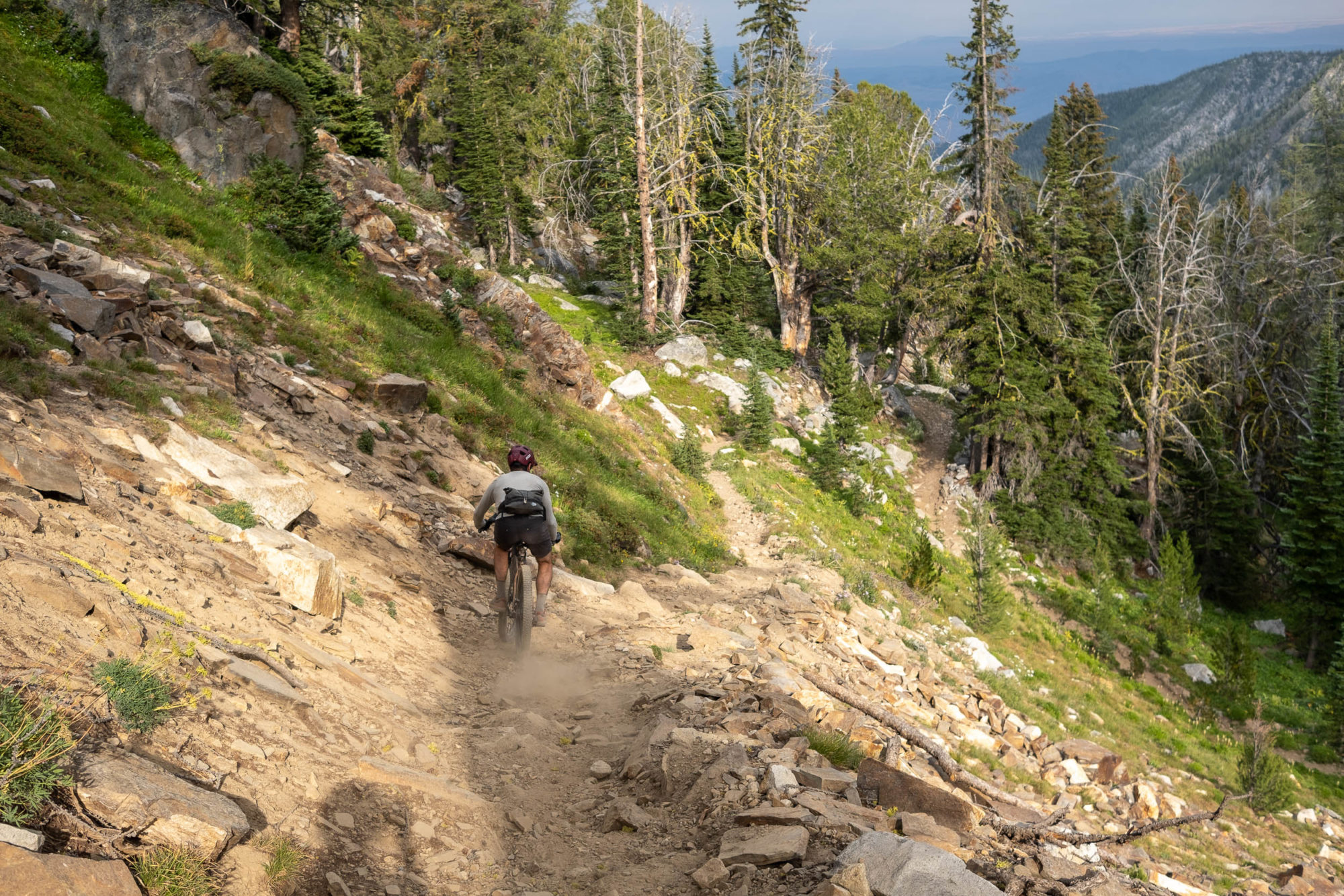
Dispersed Bikepacking Bags
Chumba-sponsored riders Katie and Andrew Strempke launched Dispersed Bikepacking earlier this year. Based on years of ultra-endurance racing and bikepacking, they’ve been making custom bikepacking bags out of their cargo van all across the US. Their bags have a distinctive, clean aesthetic and they’ve been working closely with Chumba to offer custom frame bags for their customers. Dispersed put together a custom frame bag and a top tube bag made from LiteSkin and a dark blue EcoPak X-Pac fabric for the Yaupon I tested. It’s worth noting that the top tube bag is smaller than their normal model, as requested by Chumba.

Both the top tube bag and frame bag feature bolt-on attachments thanks to slick oval grommets pressed into the bags. They use burly #8 molded tooth zippers with extra-long pulls that are smooth and easy to operate, there’s a hydration port on the frame bag, and it features a lace-up attachment along the top tube for better load distribution. Plus, it looks pretty cool. Overall, I’ve been impressed the quality and attention to detail of Dispersed’s bags. See more at Dispersed.Bike.

- Model/Size Tested: Chumba Yaupon Steel, Size Large
- Actual Weight (no pedals): 26.8 pounds (12.1kg)
- Place of Manufacture: Texas, USA
- Price: $1,895 USD (frame-only)
- Manufacturer’s Details: ChumbaUSA.com
Pros
- Comfortable, trail-capable, and ready for the long haul
- Room for a good-sized frame bag and/or multiple bottles
- Lots of clearance for a long-travel dropper post
- Handmade in Texas with options for customized specs and geometry
- Sliding PMW dropouts add options for singlespeed, internally geared hubs, and easy repairs
- Impressively lightweight for such a burly build
Cons
- Expensive
- Not the “perfect” bike for anything specific, but suitable for most everything
- Rear rack mounts aren’t standard
- Front end feels a little heavy at times with the suspension fork
Wrap Up
The growing number of purpose-built ATBs is exciting for bikepackers. They’re normally well-equipped for hauling gear around, can handle anything from paved pathways to chunky singletrack, and won’t be overkill as your daily driver. Are you going to have to slow down on trails when running a rigid or short-travel fork? Yeah, probably. But then again, if folks started asking us, “Can I ride this on an ATB?” the answer would always be yes. Gravel bikes pigeonhole themselves into a less-equipped category, where ATBs leave a lot of room for personalized imagination. Ultimately, what an ATB is and can handle is up to you.
The Chumba Yaupon is my glass slipper of drop-bar bicycles. I’ve become a huge fan of the more upright and comfortable riding position, allowing me to take in my surroundings and interact with what’s happening around me. The long and slack front end and counteracts that when the trail gets skinny and steep, giving experienced riders the chance to have a lot of fun on some pretty hairy terrain. It can be built up like a burly cross-country mountain bike—similar to the build I tested—or pared down with a rigid fork and lighter components for a featherweight ultra-endurance racing rig. Even though I think I found its upper limit on some of Washington’s remote singletrack, it’s downright impressive that riding such trails on the Yaupon even an option.
So, who’s it for? There’s no question that Chumba makes some incredibly dialed bikes, but that quality and made-in-Texas label comes at a cost. This, unfortunately, is going to make the Yaupon out of reach for many folks. Unlike some of the other big-tired drop bar bikes we’ve reviewed recently, I think the Yaupon could replace a mountain bike if its limitations are understood and you’re okay with tackling certain trails a little differently. Of course, there’s also the benefit of running drop bars, which is great for providing multiple hand positions on long rides. I normally shy away from technical terrain with curly bars, but the Yaupon had me second guessing my reservations. It’s a great example of just how far you can push a drop-bar mountain bike, and I think anyone who’s inclined to push boundaries should take a closer look.
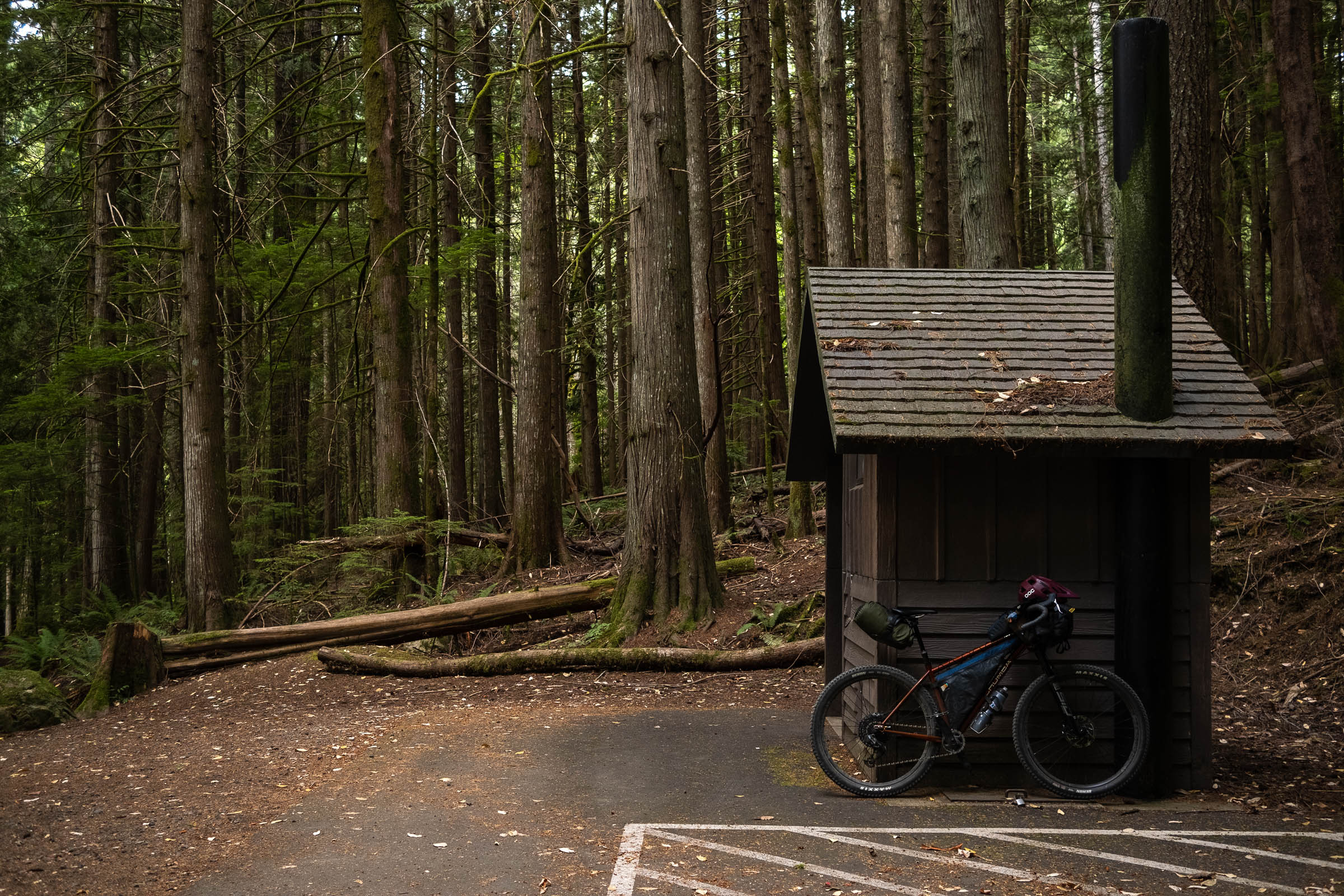

Do you enjoy our in-depth reviews, route guides, and stories? We’re a small, independent publication dedicated to keeping our content free for everyone, but we need your support. To keep articles like this one coming (and not behind a firewall), please consider becoming a member of our Bikepacking Collective. By joining, you’ll receive The Bikepacking Journal in the mail twice a year, industry discounts, and many other great benefits. Learn more here.
Related Content
Make sure to dig into these related articles for more info...
Please keep the conversation civil, constructive, and inclusive, or your comment will be removed.






